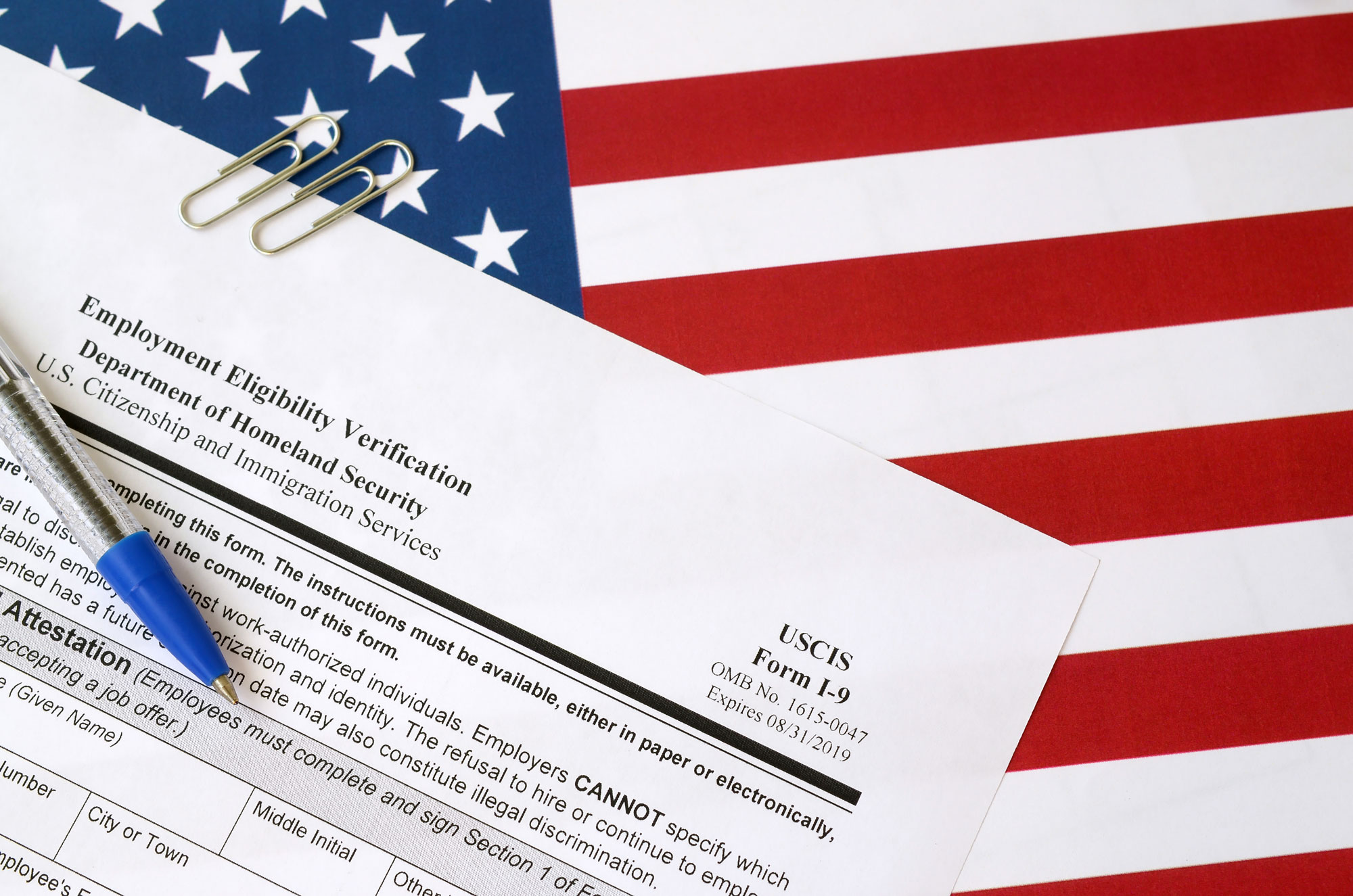
Best practices for maintaining Form I-9 compliance
Complying with Form I-9 requirements can be difficult, but understanding this complicated government form is an important part of the hiring process that demands accuracy.
In this article, we’ll discuss some basic information about the form, the new, just-released Form I-9, and best practices for employers to remain in compliance with the I-9 process. We’ve even added a question to test your I-9 reverification skills.
The basics
First, the basics: all employers, regardless of size, are required to complete the Form I-9 for each newly hired employee (regardless of immigration status) to verify their eligibility to work in the United States. This rule became part of employment immigration law after Congress passed the Immigration Reform and Control Act of 1986 (IRCA).
During the I-9 process, the employee and the employer attest to the individual’s citizenship, permanent residency, or work authorization. Most important, employers are required to authenticate the identification documents provided—and must view the original documents rather than photocopies. The form provides a list of acceptable documentation for (1) identification and/or (2) work authorization. On August 1, 2023, the Department of Homeland Security (DHS) released a new, streamlined and updated Form I-9 that includes modifications to the Lists of Acceptable Documents that can be used for employment verification.
Form I-9 completion timeline
New employees must complete Section 1 of the I-9 form on or before the first day of work (but never before an offer of employment has been made). The employee’s signature on the form holds that person responsible for the accuracy of the information provided. Employers are responsible for making sure the employee completes Section 1 of the form in full.
Employers must complete Section 2 no later than the end of the employee’s third day on the job. At this point, the employer must review the required documentation and record the document information on the form. Many work authorization documents must be renewed and, therefore, Form I-9 must be updated as necessary. This process is called “reverification” and is performed using the Reverification and Rehire supplement of Form I-9.
Reverifications can be challenging
Completing I-9s and performing reverifications can be tricky. Many employers would likely agree that employment verification is one of the most difficult HR processes to get right.
Common issues can include:
- The I-9 requires input from both employees and employers. That’s twice the opportunity for mistakes. Most workplace documentation is completed by one person, perhaps an HR pro who is very familiar with the form. As an employee, by the time you complete another I-9, the form has likely changed.
- Also, the window for completion is very narrow—you must complete I-9s very quickly during that first hectic week of work.
- Then, the I-9 is never submitted to a government agency for review. You just keep it in your files and wait for auditors to come knocking. So, errors and mistakes can go unnoticed and continue happening on new forms for years.
- The I-9 is an “immigration” form, but it must be completed for nearly every worker—including U.S. Citizens. This can seem misleading.
- The reference material is lengthy, too. Even though the actual form has now been reduced to only one page, you’ve also got the list of acceptable documents, the 8-page instructions, and then an additional hundred-plus-page reference handbook.
- And finally, mistakes can be very expensive. Violations on the form alone can range from $272 to $2,701 per form.
To illustrate the complexity of the I-9 process, here is a question for you to consider:
While auditing I-9s, you discover that an employee’s permanent resident card (green card) has expired. What should you do?
- Reverify, ask to see a renewed green card.
- Reverify but give the choice of verification document.
- Nothing.
Take a few minutes to ponder this question (the answer will be provided at the end of this article), and let’s see if you picked the correct response.
There’s a new form in town
On August 1, 2023, the DHS published a revamped and streamlined Form I-9. The new form has an edition date of 08/01/23 and must be used starting November 1, 2023. Employers may continue to use the 2019 version of the form through Oct. 31, 2023. However, beginning November 1, only the new Form I‑9 dated “08/01/2023” may be used. The version date can be found at the lower left corner of the form.
There are many changes and improvements to the updated Form I-9. Some of the most notable are:
- Reduces the length. It reduces Sections 1 and 2 to a single-sided sheet.
- Revises the Lists of Acceptable Documents page. The list now includes some acceptable receipts as well as guidance and links to information on automatic extensions of employment authorization documentation.
- Moves Section 1 Preparer/Translator Certification. It also moves Section 1 to a separate, standalone supplement that employers can provide to employees when necessary.
- Moves Section 3, Reverification and Rehire. Section 3 is moved to a standalone supplement. Employers should fill out Supplement B when rehire occurs or when reverification is required (This should be completed prior to the date that the worker’s employment authorization expires).
- Reduces Form Instructions. The I-9 Instructions are reduced from 15 pages to 8 pages.
Another important change
Starting November 1, employers that fail to use the 08/01/23 edition of Form I-9 may be subject to penalties under section 274A of the INA, as enforced by ICE.
Ready to test your I-9 knowledge?
If you answered choice #3 to the above question, that is the correct answer!
Permanent resident status is just that—permanent. There’s no more need to reverify a permanent resident’s expired green card than to reverify a U.S. citizen’s expired driver’s license. Form I-9 rules instruct employers not to reverify a lawful permanent resident who initially presented an unexpired permanent resident card, even when the card expires. Employers should also be aware that reverifying employees with green cards can result in a discrimination charge based on national origin.



